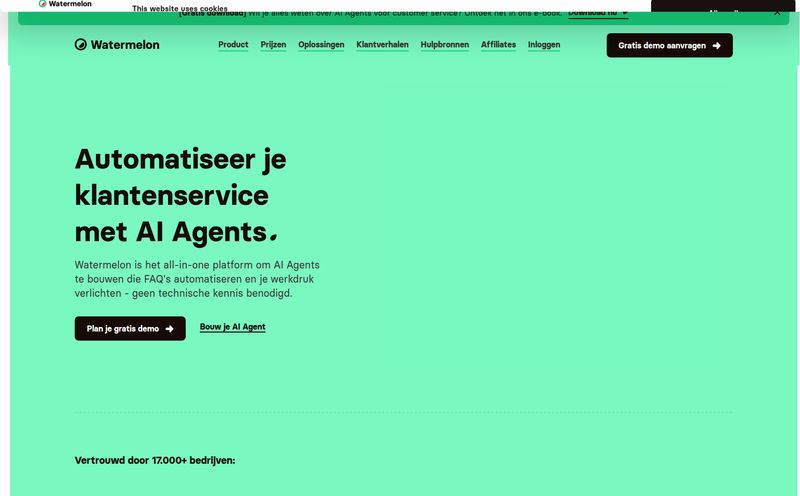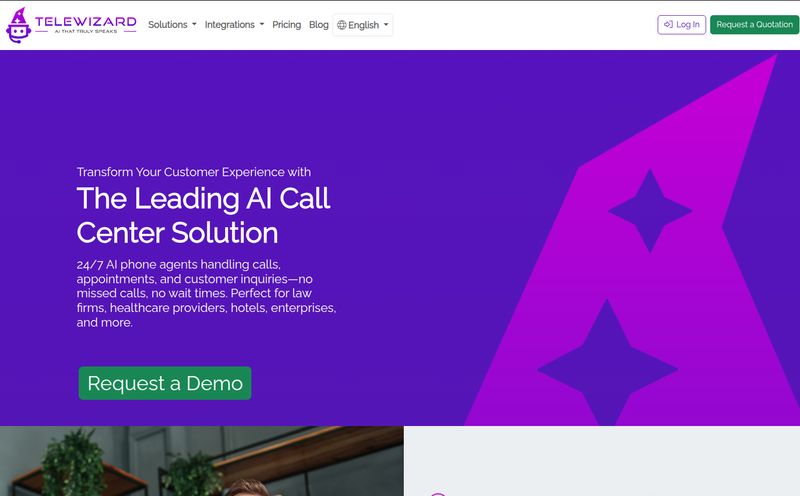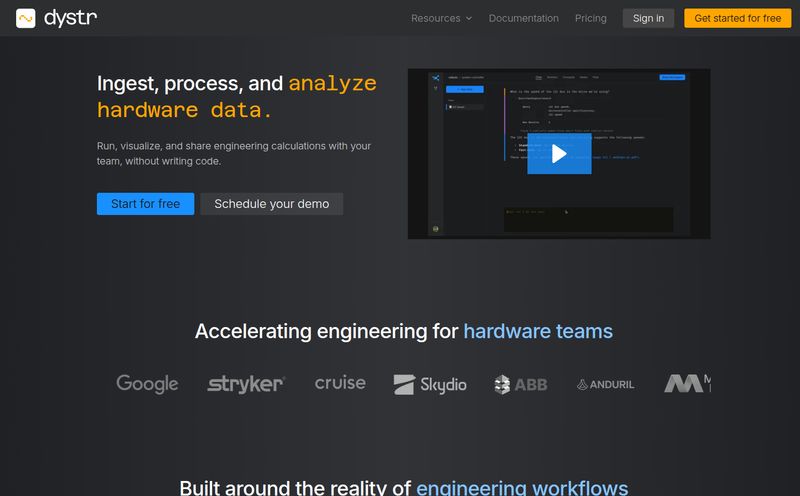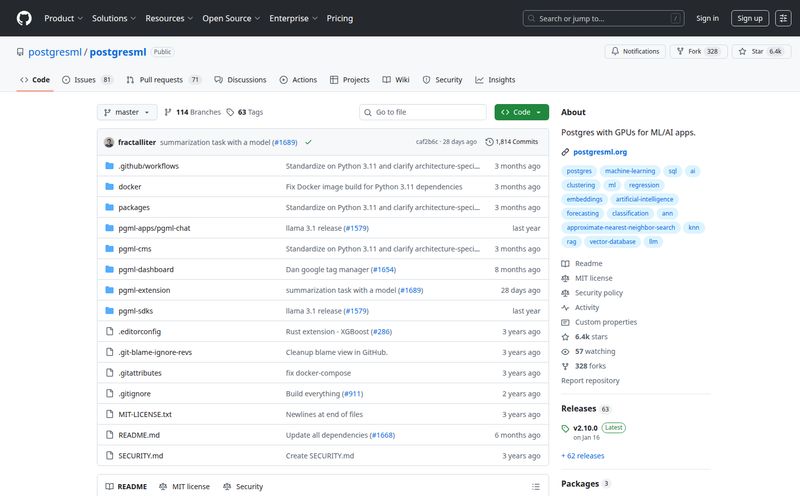Building anything with Large Language Models is a bit of a chaotic circus right now. One minute you’ve got a genius AI that can write poetry about your cat, the next it’s confidently telling you that the sky is made of green cheese. We’ve all been there. The journey from a cool `main.py` script to a production-grade, reliable AI service is a long, winding road paved with prompt-tweaking, hallucination-wrangling, and a whole lot of DevOps headaches. I've personally lost weekends to this stuff.
So whenever a new tool pops up claiming to tame this chaos, my cynical-o-meter goes off. But then I saw Teammately, and the tagline—"Build AI that's hard to misbehave"—made me chuckle. It felt… honest. They're not promising a silver bullet, but a better leash for the AI beast. And their whole pitch is that they’re an AI Agent for AI Engineers. This isn't just another wrapper; it's a tool designed for the people in the trenches.
What Exactly is Teammately? The Elevator Pitch
Alright, so what is this thing? Teammately positions itself as an AI agent that automates pretty much the entire LLM app development lifecycle. Think of it less as a tool you use, and more as a partner that works alongside you. The core idea that really grabbed me is how they talk about modular AI. They say you can "set up modular AI like a container and scale it everywhere without infra configs."
If you've ever worked with Docker or Kubernetes, that should make your ears perk up. It’s a powerful analogy. They’re aiming to do for AI components—the LLMs, the prompts, the vector databases—what containers did for application code. Package it all up, manage it centrally, and swap parts in and out without tearing down the whole house. That’s a pretty compelling vision.
The Core Features That Caught My Eye
A slick landing page is one thing, but the feature set is where the rubber meets the road. And Teammately has a few that genuinely address the pain points I face every day.
Taming the Prompting Beast
Ah, prompt engineering. The dark art we all have to practice. Teammately comes with Prompt Generation & Self-Refinement. The platform creates and tests prompt variations based on the results. If a result is bad, the agent learns and adjusts. This moves prompting from a guessing game to a more scientific, automated process. The amount of time this could save is just staggering. It’s like having an intern who does nothing but A/B test prompts 24/7, except this intern is an AI and never gets tired.
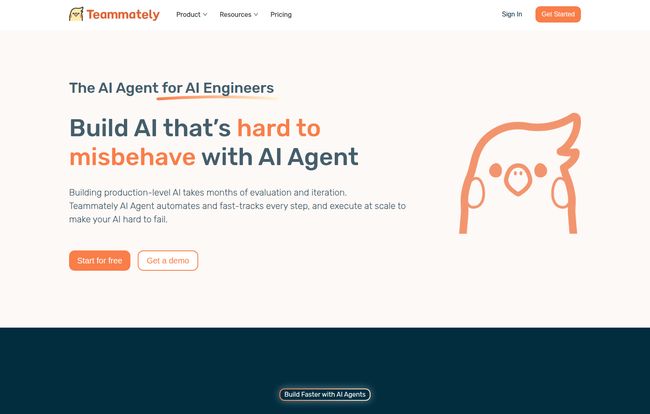
Visit Teammately
Building Smarter with Agentic RAG
Retrieval-Augmented Generation (RAG) is all the rage, and for good reason. It’s how we give LLMs access to our private data to get relevant, factual answers. Teammately offers an Agentic RAG Builder. The "Agentic" part is what's interesting. It suggests a more autonomous system that can intelligently decide how and when to retrieve information, rather than just following a rigid script. This is how you level up from simple Q&A bots to more sophisticated, context-aware assistants.
Finally, Understandable AI Observability
One of the scariest things about production AI is when it goes wrong and you have no idea why. It's a black box. Teammately’s promise of Interpretable AI Observability is a huge deal. It’s about getting a clear view into the AI’s decision-making process—what prompts were used, what data was retrieved, why it gave the answer it did. Without this, you’re flying blind. With it, you can actually debug, improve, and build trust in your system.
The LLM Judge and Automated Testing
How do you know if your new prompt is actually better? Or if switching from OpenAI to Anthropic improved or degraded quality? You need a judge. Teammately includes a Multi-dimensional LLM Judge and a test case synthesizer. It automatically generates test cases from your data and then evaluates the AI’s performance across multiple dimensions like correctness, tone, and safety. This is how you make objective, data-driven decisions instead of just going with your gut feeling.
The DevOps Dream: Centralized AI Management
This is where that container analogy comes back. Teammately provides a centralized dashboard to manage everything. You can switch foundation models, update prompts across all your apps, or even roll back to a previous version with a click. For any engineer who has had to manually update a prompt in twenty different microservices, this sounds like a dream. It brings some much-needed sanity and control to the operational side of AI.
Let's Talk Brass Tacks: The Good and The... Considerations
No tool is perfect, especially in a field this new. From my analysis, here’s the breakdown:
On the plus side, the automation potential is massive. It's designed to slash development time and make your AI apps more reliable from the get-go. The centralized management simplifies what is quickly becoming a complex AI DevOps nightmare for many companies. And the feature set, from the Agentic RAG to the LLM Judge, is clearly built by people who get the real-world challenges.
However, there are a few things to keep in mind. The website notes some features are still “Coming soon,” so you might be adopting a platform that's still growing. Like any powerful system, there's likely an initial setup and learning curve to integrate it into your existing workflow. Also, for the performance purists out there, they mention a 20ms overhead. For most web applications, that’s a non-issue, but for something extremely latency-sensitive, it's a number to be aware of. I appreciate the transparency, honestly.
So, How Much Does Teammately Cost?
Here's the million-dollar question. As of my review, Teammately hasn't made its pricing public. This is pretty standard for B2B SaaS platforms targeting enterprise clients or those in an early access phase. Their website has a clear "Get a demo" call to action, which suggests they're focusing on tailored solutions for teams. You'll have to reach out to them directly to get a quote based on your needs.
Is Teammately Right for Your Team?
In my opinion, Teammately isn't for the hobbyist tinkering with an API key. It's built for professional AI engineers and teams who are serious about shipping production-grade LLM applications. If you're struggling to get from prototype to a reliable, scalable service, or if your team is bogged down in the operational complexities of managing multiple AI models and prompts, then Teammately looks like it could be a very, very smart investment. It’s for the teams that have moved past the initial "wow" factor of AI and are now facing the harsh reality of making it work, reliably and safely, at scale.
Frequently Asked Questions about Teammately
What is Teammately in simple terms?
Think of it as a smart assistant or a co-pilot for AI engineers. It helps automate the repetitive and difficult parts of building, testing, and running applications that use large language models (LLMs), making the whole process faster and more reliable.
How does Teammately help with AI "hallucinations"?
It tackles this in several ways. The Agentic RAG builder grounds the AI in factual, private data, reducing the chances of it making things up. Additionally, its automated testing and LLM Judge system constantly evaluates the AI's output for correctness, helping you catch and fix hallucinatory behavior before it reaches users.
Is Teammately a no-code platform?
While it has features like a No-code App Builder, its primary audience is AI Engineers. It's more of a low-code/pro-code accelerator. It handles the complex backend and DevOps work, allowing engineers to focus on building the core logic and value of their AI applications more efficiently.
Can I use different LLMs like models from OpenAI, Google, or Anthropic?
Yes. A core feature is its modular, centralized management system. This is designed to let you easily switch between different foundation models and providers without having to re-architect your application, which is a major advantage for flexibility and cost management.
What's the deal with the 20ms overhead? Should I be worried?
This refers to the tiny amount of extra processing time Teammately adds to each AI call to perform its management and observability functions. For the vast majority of web and business applications, 20 milliseconds (0.02 seconds) is completely unnoticeable. It would only be a potential concern for highly specialized, real-time systems where every millisecond counts, like high-frequency trading.
A Promising Step in the Right Direction
Look, the AI space is noisy. There are a million tools all screaming for your attention. But Teammately feels different. It's less focused on the flashy demos and more on solving the gritty, unglamorous, but absolutely critical problems of building and maintaining AI in the real world. It’s ambitious, and if they deliver on their promises, it could genuinely change how teams build with LLMs.
It’s a platform I’m definitely going to be keeping a close eye on. It seems to understand that the future of AI isn’t just about making models bigger, but about making them better-behaved, more reliable, and easier to work with. And that’s a future I’m excited about.
